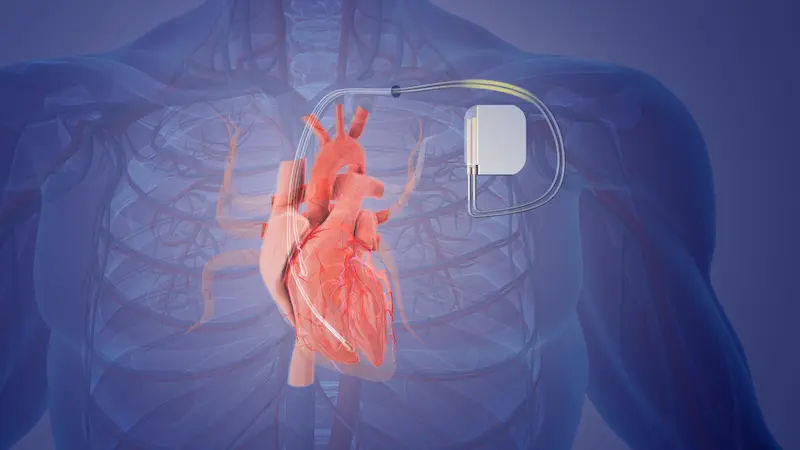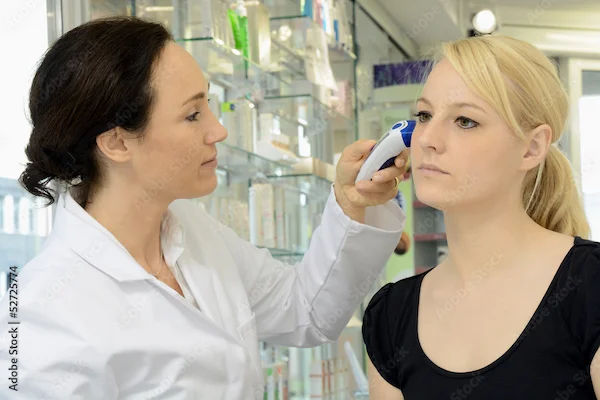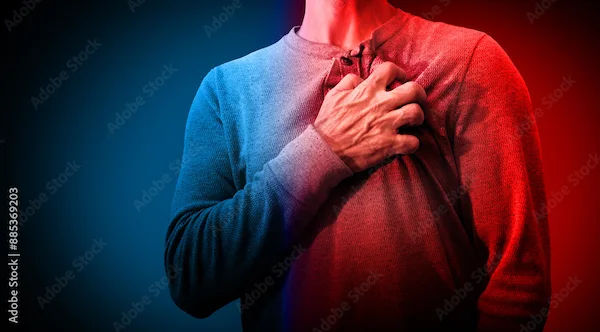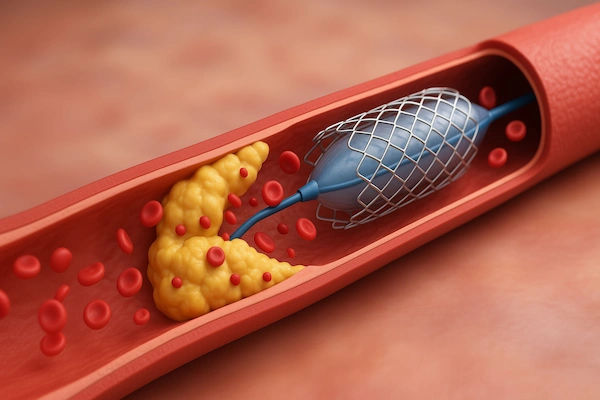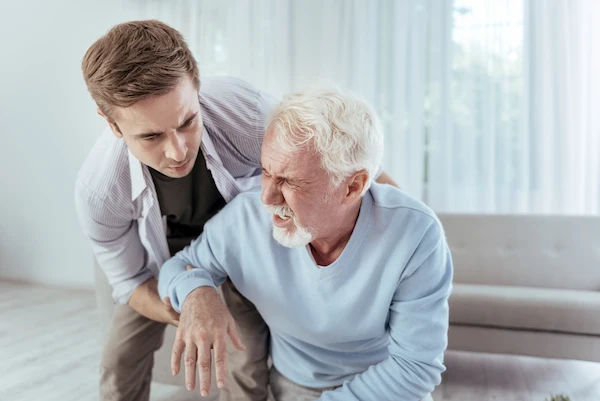Rising Incidence of Young Sudden Cardiac Deaths in India
Explore the rising incidence of sudden cardiac deaths among young people in India. Learn the causes, warning signs, prevention tips, and emergency response steps to protect yourself and others.


Introduction
“Why are young, seemingly fit people dying suddenly?” It’s a question India has been grappling with, especially as social media amplifies heartbreaking stories of sudden collapse during sports, celebrations, or everyday life. While the words incidence, young, and sudden often appear together in headlines, it’s important to separate panic from patterns—and to turn concern into concrete prevention.
This guide explains what “sudden cardiac death” (SCD) really means, what we know about its incidence in India, the hidden conditions that put certain young people at risk, and the triggers and red flags you should never ignore. It also highlights screening choices, lifestyle measures, and a practical three-minute survival guide for emergency response. You’ll find India-specific context on CPR and AED readiness, data gaps, and how communities can create simple plans that save lives. Most importantly, this article helps you reduce risk without giving up the activities you love. Knowledge, preparation, and timely medical advice can change outcomes—one person, one family, one community at a time.
Why Are We Hearing More About “Young Sudden” Cardiac Deaths Now?
This section explains why sudden cardiac deaths among young people seem to be increasing in visibility and possibly in number.
Consult a Top General Practitioner for Personalised Advice
Media Influence and Real Risk Factors
Modern media and smartphones amplify visibility. A single gym or event video can go viral, creating the impression of an epidemic. While part of this trend stems from increased awareness, India’s genuine burden of early cardiovascular disease is a real concern. Factors such as early-onset diabetes, high stress, poor diet, and air pollution accelerate heart problems even in the young.
Defining the Terms
Sudden cardiac arrest (SCA) is an abrupt loss of heart function due to electrical failure. If not reversed within minutes, it leads to sudden cardiac death (SCD). A heart attack, by contrast, involves a blocked artery—sometimes triggering SCA but not always. Recognising this difference is vital because cardiac arrest always requires immediate CPR and an AED.
Unique Insight
India’s growing fitness and sports culture is a positive trend, but exercising during illness or extreme heat can increase cardiac risk. Awareness and simple precautions can save lives without discouraging active lifestyles.
The Incidence in India: What the Data Says (and What It Doesn’t)
This section summarises what is known—and unknown—about sudden cardiac deaths among India’s youth.
Data Gaps and Global Comparison
India lacks a national SCD registry, so exact incidence rates are unclear. Globally, sudden cardiac deaths range between 50 and 100 per 100,000 annually, with much lower rates among the young but devastating personal and social impact when they occur.
Indian Studies and Key Finding
Indian data indicate that premature coronary artery disease (CAD) is a major contributor, even in adults under 45. Local research shows that sudden deaths often follow unrecognised heart disease or exertion during illness. Large-scale studies also found no link between vaccination and unexplained deaths but did highlight risks like binge drinking, heat exposure, and unwise exercise practices.
Unique Insight
Creating a low-cost, state-level SCD and cardiac arrest dashboard linked to ambulance networks could guide training, AED placement, and public policy—saving lives even before a national registry exists.
Hidden Causes in the Young: Structural, Electrical, and Acquired
This section explores the underlying medical conditions that can lead to sudden cardiac death in young individuals.
Structural and Acquired Causes
Premature CAD, cardiomyopathies such as hypertrophic cardiomyopathy (HCM), and inflammatory conditions like myocarditis are major contributors. Electrical channelopathies, including Long QT and Brugada syndromes, can trigger fatal arrhythmias without warning.
Red Flag Clues
Family history of sudden death, fainting during exertion, or chest discomfort under stress warrants medical testing such as ECG, echocardiogram, or cardiac MRI.
Unique Insight
Heat stress and dehydration are significant but overlooked triggers in India. Planning hydration and shade breaks can help prevent fatal events, especially in outdoor or athletic settings.
Triggers and Red Flags You Shouldn’t Ignore
This section outlines the lifestyle and environmental triggers that can precipitate sudden cardiac arrest and the warning signs to act upon early.
High-Risk Triggers
Avoid vigorous exercise within two weeks of an illness. Binge drinking, stimulants, and energy drinks can destabilise heart rhythm, particularly when combined with sleep deprivation or dehydration.
Warning Signs
Exertional fainting, chest pain, breathlessness, and recurrent palpitations—especially with dizziness—are red flags. Those with a family history of sudden death or cardiac conditions should seek screening immediately.
Unique Insight
Displaying a “Do Not Exercise If” red flag checklist in gyms, schools, or on phones could prevent collapses by prompting rest or evaluation at the right time.
Screening and Diagnosis: Who, When, and How to Do It Right
This section explains who should undergo cardiac screening and what tests provide the most valuable insights.
Who Needs Screening
Individuals with exertional symptoms, family history of SCD, or athletes involved in competitive sports should be screened using a structured questionnaire, physical exam, and ECG.
Diagnostic Tools
ECG and echocardiography are the most accessible tests, revealing electrical and structural abnormalities. More advanced assessments—Holter monitoring, cardiac MRI, or genetic testing—may follow if abnormalities are detected.
Unique Insight
Smartphone ECG patches and digital stethoscopes are becoming accessible in India, helping capture irregular rhythms that traditional tests might miss.
Prevention and Readiness: From Lifestyle to Lifesaving Skills
This section discusses how personal health habits and community preparedness can reduce SCD risk.
Lifestyle Management
Quit tobacco, control lipids and blood sugar, and prioritise sleep and hydration. Managing stress and avoiding extreme heat during workouts significantly reduces risk.
Community Preparedness
Train at least 10% of people in your community in CPR and AED use. Map and maintain AEDs in gyms, offices, and campuses. Conduct biannual drills focusing on quick recognition and chest compressions.
Unique Insight
Offering incentives for CPR training—like gym perks or event discounts—can dramatically increase participation and save lives.
What to Do If Someone Collapses: A 3-Minute Survival Guide
This section offers a step-by-step action plan for responding to cardiac arrest before medical help arrives.
Step 1: Check
Tap and shout. If the person is unresponsive and not breathing normally, assume cardiac arrest.
Step 2: Call
Alert others. Have someone call the emergency number and fetch the AED. If alone, call on speaker mode.
Step 3: Compress (Hands-Only CPR)
Place the heel of one hand in the centre of the chest, the other on top. Push hard and fast—100–120 compressions per minute, 5 cm deep—allowing full recoil. Continue until help or an AED arrives.
Step 4: Use the AED
Follow the device prompts: attach pads, stand clear during analysis, and deliver a shock if advised. Resume CPR immediately after.
Aftercare
Even if the person recovers, immediate hospital evaluation is vital. Families should be screened for inherited cardiac conditions. Apollo24|7 offers convenient online consultations to plan this next step.
Unique Insight
Assign a designated “runner” in emergency drills—the person responsible for clearing paths and guiding paramedics. This saves critical minutes.
Conclusion
Reports of young people collapsing suddenly are alarming, but panic isn’t the solution—preparation is. India faces a unique mix of genetic, lifestyle, and environmental factors that elevate sudden cardiac risk in the young. However, awareness, screening, and quick emergency response can drastically change outcomes. Recognise red flags, rest when ill, avoid dehydration and stimulant overuse, and prioritise regular health checks.
Workplaces, schools, and fitness centres can make a lifesaving impact through CPR and AED readiness. Health authorities can further strengthen outcomes by building national registries and implementing standardised athlete screenings. For personal advice or evaluation, consult a doctor online with Apollo24|7, which offers access to heart health tests and preventive care plans. Together, awareness and action can keep India’s youth active—and safe.
Consult a Top General Practitioner for Personalised Advice
Consult a Top General Practitioner for Personalised Advice

Dr. Anand Ravi
General Physician
2 Years • MBBS
Bengaluru
PRESTIGE SHANTHINIKETAN - SOCIETY CLINIC, Bengaluru

Dr. Vivek D
General Physician
4 Years • MBBS
Bengaluru
PRESTIGE SHANTHINIKETAN - SOCIETY CLINIC, Bengaluru

Dr Syed Mateen Pasha
General Physician
2 Years • MBBS
Bengaluru
PRESTIGE SHANTHINIKETAN - SOCIETY CLINIC, Bengaluru

Dr. D Bhanu Prakash
General Practitioner
10 Years • MBBS, AFIH, Advanced certificate in critical care medicine, Fellowship in critical care medicine
Hyderabad
Apollo 24|7 Clinic, Hyderabad

Dr. Madhuri Sai Sreepada
General Practitioner
9 Years • MBBS
Hyderabad
BRIGHT SMILES MEDICARE & DENTAL CARE, Hyderabad
Consult a Top General Practitioner for Personalised Advice

Dr. Anand Ravi
General Physician
2 Years • MBBS
Bengaluru
PRESTIGE SHANTHINIKETAN - SOCIETY CLINIC, Bengaluru

Dr. Vivek D
General Physician
4 Years • MBBS
Bengaluru
PRESTIGE SHANTHINIKETAN - SOCIETY CLINIC, Bengaluru

Dr Syed Mateen Pasha
General Physician
2 Years • MBBS
Bengaluru
PRESTIGE SHANTHINIKETAN - SOCIETY CLINIC, Bengaluru

Dr. D Bhanu Prakash
General Practitioner
10 Years • MBBS, AFIH, Advanced certificate in critical care medicine, Fellowship in critical care medicine
Hyderabad
Apollo 24|7 Clinic, Hyderabad

Dr. Madhuri Sai Sreepada
General Practitioner
9 Years • MBBS
Hyderabad
BRIGHT SMILES MEDICARE & DENTAL CARE, Hyderabad
More articles from Heart Attack
Frequently Asked Questions
Are sudden cardiac deaths in young Indians actually increasing?
Accurate data are lacking, but better reporting and real risk factors such as early CAD, illness-exercise overlap, binge drinking, and heat exposure mean vigilance is vital.
What are the most important red flags in young adults?
Fainting during exertion, chest pain with activity, recurrent palpitations, or a family history of early cardiac death. If symptoms persist beyond two weeks, consult a doctor online with Apollo24|7.
Can I exercise after a viral illness if I feel “okay”?
Avoid vigorous exercise until fully recovered and fever-free for several days. If chest pain or palpitations occurred during illness, seek medical advice first.
Do energy drinks increase the risk of sudden cardiac arrest?
Yes. High caffeine and stimulant levels can cause arrhythmias, especially when combined with alcohol, heat, or lack of sleep.
Should all athletes get an ECG in India?
Ideally, yes—along with a physical and family history review. Abnormal findings should be followed up with an echocardiogram or MRI under specialist guidance.
